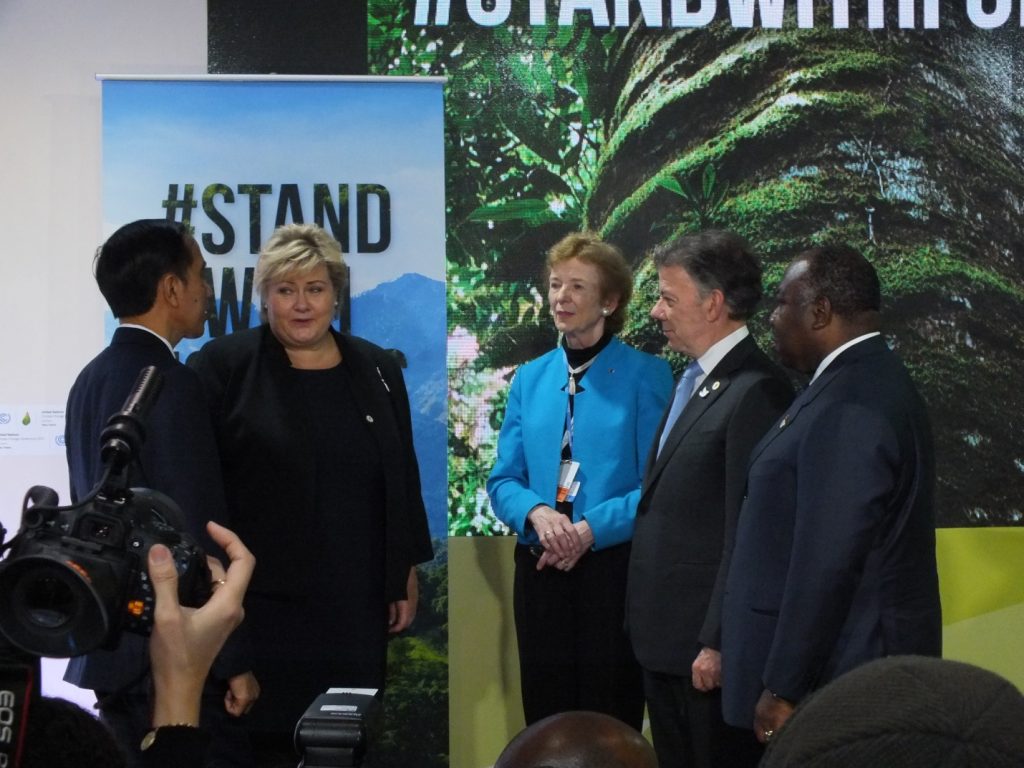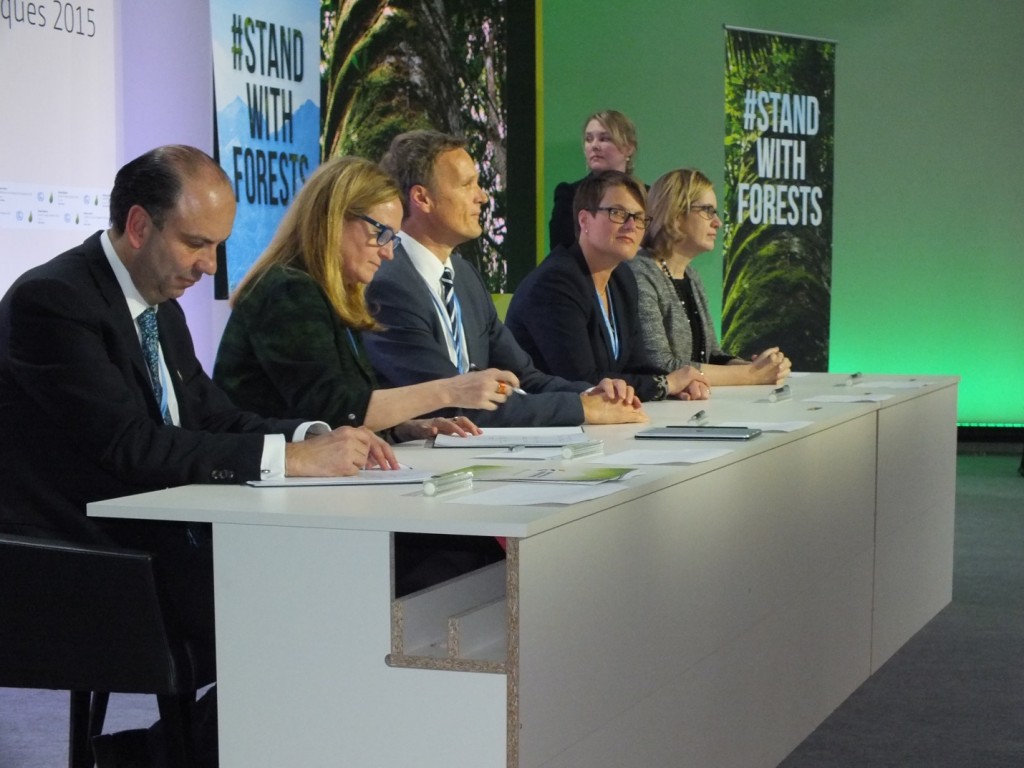Note: this story has been excerpted from “How Markets And Mother Earth Each Found A Home In The Paris Climate Accord.” Click here to read the full story.
15 December 2015 | REDD began percolating way back in the early 1970s, when physicist Freeman Dyson asked a simple question: “Can we control the carbon dioxide in the atmosphere” by planting trees that breathe in carbon dioxide and breathe out oxygen? His answer: yes, we can, but we’d still need to slash our industrial emissions to prevent catastrophic climate change. In the late 1980s, a policy analyst with the World Resources Institute named Mark Trexler realized you could sponge up even more carbon dioxide if you saved endangered rainforest rather than planting new trees, and the energy company Applied Energy Services (AES) worked with him to reduce their carbon footprint by doing just that.
[“REDD Dawn: The Birth Of Forest Carbon“]
To measure the carbon, they used the same process that timber companies use to estimate the amount of wood in a forest: basically, measuring trees at chest-height and then applying “allometric equations” to see how much wood – and, by extrapolation, carbon – they contained. To determine which parts of the forest were in danger, they used a combination of econometric modeling and historic rates of deforestation (a process that was rudimentary at the time and resulted in over-counting, but which has been improved and refined over the years).
[“Understanding Carbon Accounting Under The UN Framework Convention“.]
Since then, indigenous people from Brazil to Kenya have used REDD to save endangered forest by jump-starting sustainable business activities like harvesting acai berries or Brazil nuts, or even just adopting more efficient woodstoves. From the start, however, REDD was plagued by the false duality that sees an either/or relationship between morality and markets – a view just as crippling as the pure free-market fundamentalism that got us into this mess. (It’s a way of thinking that also concludes you either save the forests or you reduce industrial emissions; in reality, we must do both.)
Article 5: REDD+
Article 5 contains just two paragraphs, but those paragraphs refer to at least a dozen decisions and elements of other agreements, and the entire history of this extraordinary document is there if you know to look for it.
Paragraph 1: Parties should take action to conserve and enhance, as appropriate, sinks and reservoirs of greenhouse gases as referred to in Article 4, paragraph 1(d), of the Convention, including forests.
This refers to that part of the framework convention itself that recognizes “common but differentiated” responsibilities between rich and poor countries, and also the need to promote the sustainable management of natural carbon sinks, including “biomass, forests and oceans as well as other terrestrial, coastal and marine ecosystems.” It’s echoed in the Paris agreement, which recognizes the “importance of ensuring the integrity of all ecosystems, including oceans, and the protection of biodiversity, recognized by some cultures as Mother Earth, and noting the importance for some of the concept of ‘climate justice’, when taking action to address climate change.”
Paragraph 2: Parties are encouraged to take action to implement and support, including through results-based payments, the existing framework as set out in related guidance and decisions already agreed under the Convention for: policy approaches and positive incentives for activities relating to reducing emissions from deforestation and forest degradation, and the role of conservation, sustainable management of forests and enhancement of forest carbon stocks in developing countries; and alternative policy approaches, such as joint mitigation and adaptation approaches for the integral and sustainable management of forests, while reaffirming the importance of incentivizing, as appropriate, non-carbon benefits associated with such approaches.
This is a mouthful, so let’s break it down. “Results-based payments,” means money, to be paid from one country to another based on the amount of extra carbon the receiving country keeps locked in forests as a result of actions that countries take to slow deforestation. These payments may be “market-based”, which means the country paying for them then gets to reduce its own emissions by the additional amount of carbon locked in trees, or they may be “non-market” based, in which case the country receiving the payment also gets credit for the emission-reduction achieved – but that is dealt with in Article 6.
“The existing framework as set out in related guidance and decisions already agreed under the Convention,” refers to roughly a dozen decisions made over the years regarding the measurement of forests, the establishment of reference levels, and the role of indigenous people in preserving forests.
[“Forests Look Set To Play Big Role In Paris Patchwork Climate Accord“.]
“Activities relating to reducing emissions from deforestation and forest degradation” refers to REDD, but without mentioning the acronym directly, because it’s become a target for people with duality delusion syndrome.
“The role of conservation, sustainable management of forests and enhancement of forest carbon stocks in developing countries; and alternative policy approaches, such as joint mitigation and adaptation approaches for the integral and sustainable management of forests,” is the “+” in “REDD+” – all the other land-use issues associated with farms and fields.
“While reaffirming the importance of incentivizing, as appropriate, non-carbon benefits associated with such approaches,” refers to things like biodiversity and the protection of indigenous rights.


